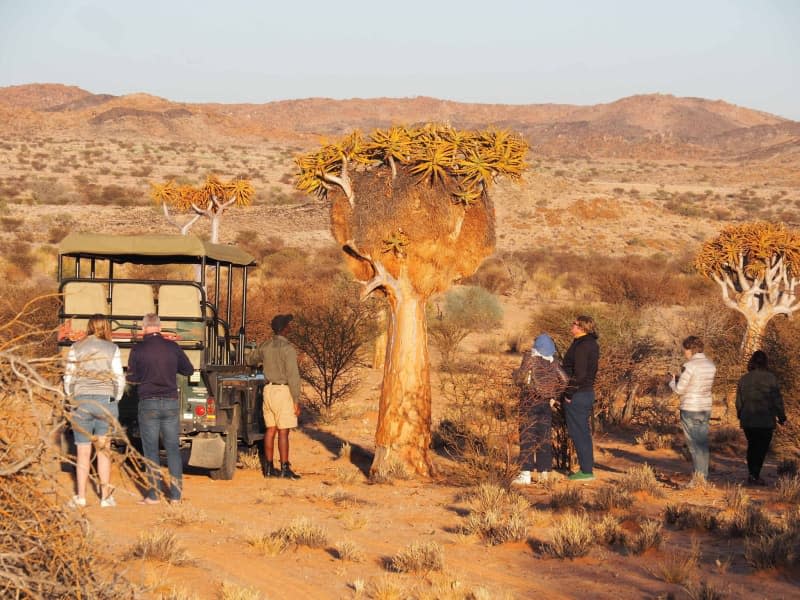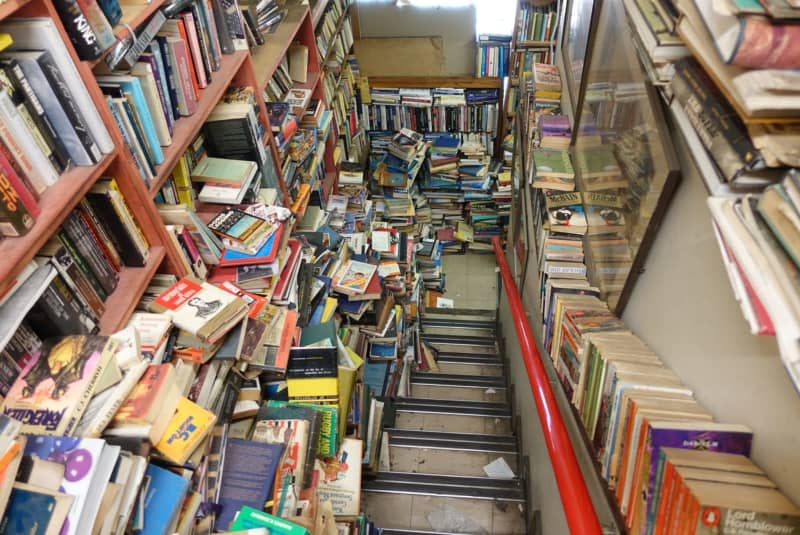Wine to wildlife: Four places that show how varied South Africa is

South Africa markets itself as the "most beautiful end of the world." In any case, the country is one of huge variety that goes beyond the world-famous Kruger National Park or the Garden Route, the panoramic stretch along the southern tip of the African continent.
Here are four stops for an unforgettable journey.
1. Cape Town: The colourful sides of the city on Table Mountain
It is as if painters applied a thick coat of paint and emptied entire boxes of watercolours: Bo-Kaap, Cape Town's historic Cape Malay neighbourhood, looks like a large painting. The residents' ancestors were brought into the country from Asia by the Dutch colonial rulers in the 17th and 18th centuries, often as slaves.
The neighbourhood stands for South Africa's variety of ethnic peoples, cultures and religions, underscored by the mosques. Small spruced-up houses painted in pastel colours stand in defiance of this dark history, if you will.
Hedges of hibiscus complement the riot of yellow, green, pink and turquoise in red and orange. Silence hovers above the alleyways, some of which are paved with cobblestones. Table Mountain rises in the background, when it isn't hiding behind a white "tablecloth" of clouds.
When visiting Bo-Kaap, make sure to stop by the Nathan Chikoto studio in Chiappini Street which focuses on colourful recycled art. The nearby Atlas spice shop in Wale Street is well-stocked.
2. Wildlife: It doesn't always have to be the "Big Five"
Out of bed at 5 am and into the four wheel-drive van. The sun is still hiding, and the anticipation is growing, whether you're heading to world-renowned Kruger National Park or a private nature preserve.
Will you be lucky enough and spot the legendary "Big Five" - an elephant, rhinoceros, cape buffalo, lion and leopard? The best bet is to book a Game Drive, an organized wildlife expedition.
It may stand several metres tall, but the giraffe does not rank among the Big Five, even though visitors see many of the elegant creatures feeding on trees during a safari in Northern Cape province.
Giraffes were a source of fascination for the indigenous people long before Europeans colonized the country. "Giraffes were depicted on rock paintings by the Khoekhoe," says driver and guide Humphrey Javangwe, using an umbrella term for South Africa's indigenous groups. "They could touch the sky and cause rain."
Along the way we also get to see wildebeest, springbok, klipspringers and quiver trees with giant nests of weaverbirds. It doesn't always have to be the Big Five.
3. Wine and more wine: Fine vintages going back to 1685
A tasting on the terrace of South Africa's oldest wine estate, Groot Constantia, will make you feel like you're in paradise.
Wine production has been flourishing here since 1685 - and connoisseur Phumela Bangani serves up delicious drop after drop. The highlights are the reds with hints of plum, dark chocolate, nutmeg and tobacco. "A Pinotage is really happy here in South Africa," she says about the thriving world-renowned red wine variety.
For those who like red and really full-bodied wines, the best bet are wines from Stellenbosch and Franschhoek. For fresh rosés and whites, the family-run winery Die Mas van Kakamas in Northern Cape province is the place to go.
Vintner André Landman grows 17 grape varieties on his farm. His portfolio also includes brandies that mature in oak barrels for years.
4. Johannesburg: A city tour in a tuk tuk
It rattles and stinks. The plastic protection on the sides of the tuk tuk is raised, the padded back seat comfortable. Sharon Miricale, who moved from Uganda two years ago, driven by the desire for a better life, sits at the handlebars. She is one of many refugees and migrants among Johannesburg's 5 million residents.
The tour starts in the Maboneng district, which is considered a safe area. Miricale is driving full speed ahead through the unvarnished scenes of everyday life. Fruit vendors pushing carts on the road, a roadside shoemaker glueing soles onto shoes. Beauty parlours and the financial district stand in stark contrast to the poverty-stricken figures lugging sacks of metal cans and plastic to recycling companies.
At Kwa Mai Mai market, a European visitor in a bright yellow tuk tuk elicits friendly curiosity. Columns of smoke rise from barbecue grills. Sounds boom from speakers. Even though it's morning, booze is being served up at nearby tables.
One of South Africa's hidden gems is located in the Jewel City district. Considered the largest used book shop in Africa, the Collectors Treasury spans several floors, filled with antique treasures, records and 2 million second-hand books piled high on staircases, shelves and across floors.
The brothers Geoff and Jonathan Klass are the masters of the marvellous mess. But even they can only provide limited help in your search, oddball Geoff, 75, says. "Sometimes a book finds you," he laughs.
Other Johannesburg must-sees include the roof terrace on the 15th floor of Hallmark House which towers over the teeming city. Viewing Johannesburg from above will make you realize that you only scratched the surface of this colourful, multi-faceted place at the end of the world.




